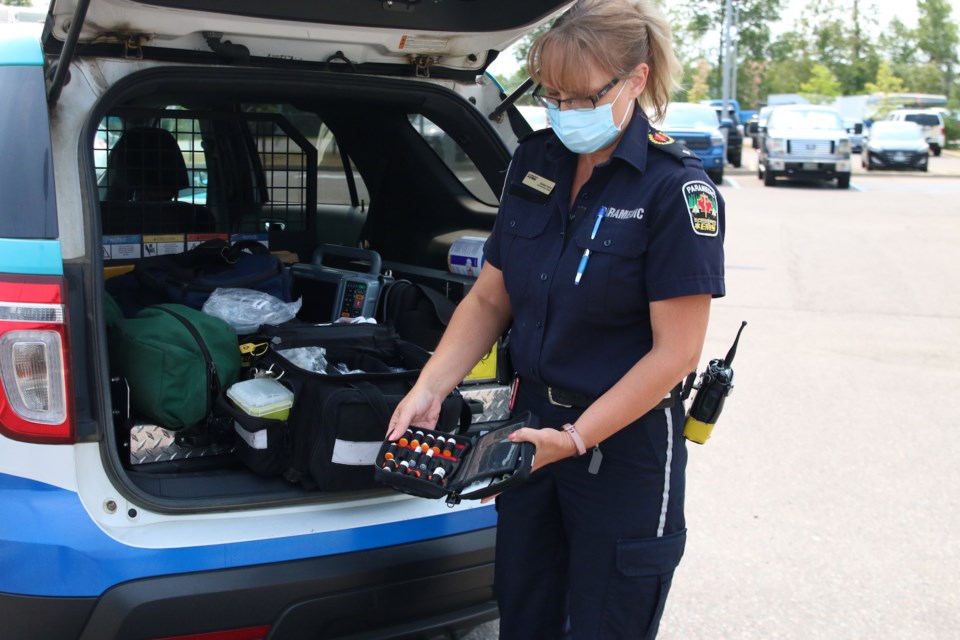THUNDER BAY - With the number of overdoses climbing across the district as a result of lethally potent street drugs, both first responders and bystanders have been administering increasing amounts of naloxone and in some cases, more than one dose is required.
“We are now averaging at least two overdose calls a day,” said Superior North EMS chief Wayne Gates. “In the month of July alone already, we have noticed that naloxone has been administered 83 times, that’s between both bystanders as well as paramedics.”
Of the 83 instances of naloxone being administered, 23 cases involved paramedics while the remaining 60 incidents involved bystanders giving the life-saving dose.
“Clearly the vast majority was given by the public and that’s a good thing,” Gates said. “That shows how important it is to carry a naloxone kit. We appreciate what the public is doing and it is helping to save lives. The troubling thing is how much we are having to use it now and the number of drug overdose calls are going up.”
Earlier this month, the Thunder Bay Police Service issued a warning regarding fentanyl use in the city following a rapid increase in the number of reported overdoses in July alone.
According to Thunder Bay Police, officers were dispatched to 36 reported overdoses, 14 of which are believed to have resulted in death. In 2021 alone, there have been 148 reported overdoses with 48 being fatal.
“We know drug use and overdose calls are up substantially this year. We also know recently a much more potent drug has come to the Thunder Bay area resulting in much more serious overdose types of calls where people are unconscious and do need naloxone,” Gates said.
“It is troubling and it is concerning. We want people to be careful and to be aware that there are bad drugs out there and you need to be careful.”
The situation is not unique to Thunder Bay, though northern communities appear to be experiencing increasing instances of overdoses compared to parts of Southern Ontario.
Given the potency of illicit drugs that have been circulating in the city, Gates said sometimes one dose of naloxone is not enough to reverse the adverse effects of an overdose.
“We have found now on a few occasions that once a person has been given naloxone they will relapse 15 to 20 minutes later and they have to be given a second dose,” he said. “That speaks to how strong these drugs are that are being laced with fentanyl.”
Gates added that he is aware of many instances when people may have experienced an overdose and brought out of it by someone providing naloxone, but still do not seek follow-up care, which can be dangerous.
“I encourage anybody, if there is an overdose, please go to the hospital and get checked out,” he said. “Even if given naloxone, there is potential for relapse.”
There are also concerns that naloxone could be viewed as a safety net for people using illicit drugs, but Gates said there is no way to know exactly what is in the drugs circulating in the city, and naloxone cannot be relied upon to reverse all the reactions people might experience.
Gates encourages everyone to carry a naloxone kit, or even more than one, because it could help save someone’s life.
Naloxone kits are free and available at most pharmacies, where training on how to use them will also be provided.
There is also an app available called Lifeguard, which is designed to assist individuals who may be using drugs alone. The app can be activated before consuming drugs and it will confirm the individual’s location and start a timer. If the individual is unable to disable the timer after using drugs, the app will automatically dispatch first responders to the location.
